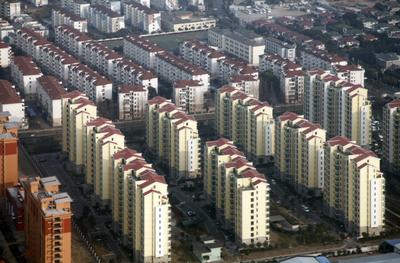One solution proposed is to lower housing prices to a level the poor can afford. Even though this solution is technically and economically feasible, it is politically unrealistic. Local governments would be strongly against this solution, as their revenue from selling land would decline with falling housing prices.
The second solution is for governments to accept responsibility for providing low-rent or low-price housing for poor and low-income households, and even for middle-income households. Many housing policy debates focus on how governments should address this responsibility.
There are three alternative solutions to the housing problem of poor and low-income groups in urban China that are being widely discussed today (CDRF, 2009).
1. Jingji shiyong fang (JSF): Price-subsidised housing sold only to low-middle-income households. Housing is sold to households qualified as most needy and with incomes below the threshold set by local governments at lower prices than market prices. Local governments contribute to this program by providing free land to estate developers and setting housing prices. The current situation is that in the large cities such as Beijing, Shanghai, Shenzhen, price-subsidised housing prices have risen with market prices to much beyond the level low-income groups can afford.
2. Lianzu fang (LZF): Rent-subsidised public housing provided only to poor households excluding migrants. This program has not attracted much attention from city governments. The major reason is that city governments need to spend more resources, both financial and land-based, to provide LZF than to provide JSF. The costs for managing and maintaining LZF are relatively higher.
3. Zhufang xianjin butie (ZXB): Housing subsidies provided in cash to households that have already bought housing or rented apartments in the market. This is not a widely implemented program and has some pilot programs in developed areas.
Currently, most cities are implementing both JSF and LZF programs at the same time. Some scholars strongly argue for abolishment of the JSF. They argue that the JSF Program is not fair, because one qualification for a buyer of JSF is his or her current income rather than permanent income. It is possible that some buyers are not really low-income group from the long-term prospective. To obtain a JSF apartment means a life benefit. In addition, the program leads to corruption. Because of a large gain resulting from huge differences in prices between commercial housing and JSF, rent-seeking activities become common phenomena in allocation of JSF. The implication for this argument is that the LZF Program should be a priority of urban housing policy in the future. The merits of the LZF Program are morally acceptable.
There is still a strong voice in favor of the JSF Program. The program is more acceptable to city governments and thus more quickly implemented. The program can also meet the housing needs of middle income households.
Housing problems are on the rise in China because reform has led to retreat from the provision of public housing. But constantly rising housing prices mean that guaranteeing an affordable supply of basic housing, not only for the poor but also for the middle classes, is now a high priority. The three solutions that city governments have devised to deal with this problem (JSF, LZF and ZXB) all have their weaknesses. From a long-term perspective, JSF is a less attractive policy option and LZF will likely do a better job of alleviating the housing problems of poor urban households.
Li Shi is Professor of Economics at the School of Economics and Business, Beijing Normal University.
This is an excerpt from a conference paper delivered at the 34th Pacific Trade and Development Conference in Beijing.


AS Professor Li said, there are no easy solutions to social affordable housing.
Beyond the three schemes, I think the government should consider a specific tax that targets the wasteful empty properties that exist in many Chinese cities, as opposed to the currently various proposed property taxes. The huge waste of hosing resources contrasts with the housing difficulties and is probably very uncommon in other countries. If the many empty properties can be rented out, then it would be easier for people to rent a property at more affordable rents.
That tax could be supplemented with an excessive resource using tax that targets some people who may spread their family members too thinly to occupy more properties that they would not normally do if no resource wasting tax is in place.
On top of this, low income tax reduction and a housing subsidy for low income people can be implemented.